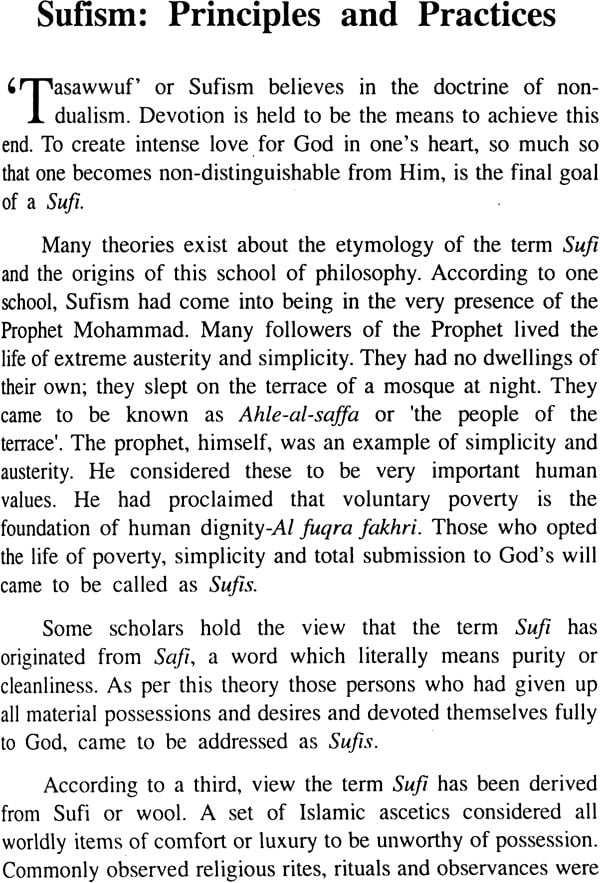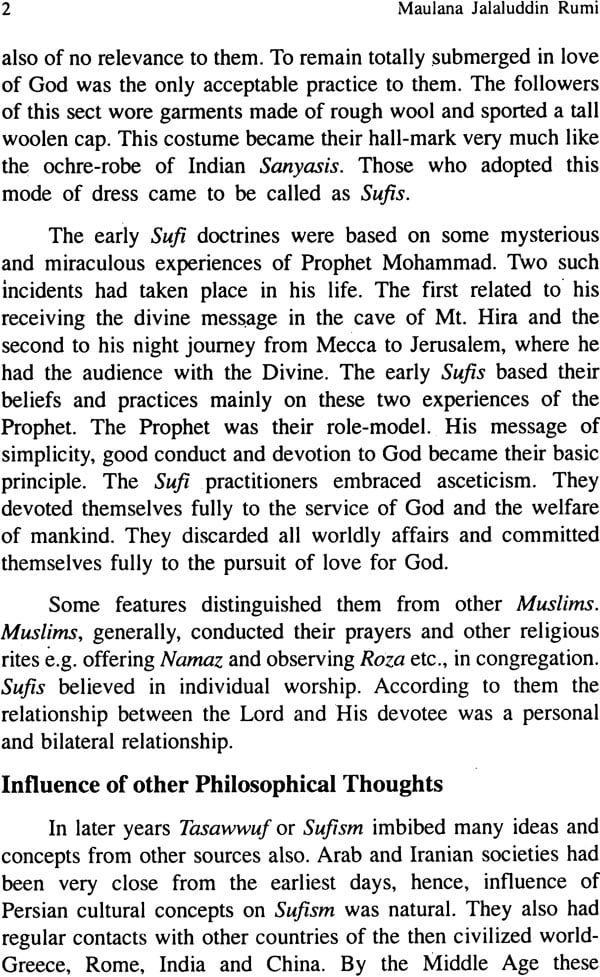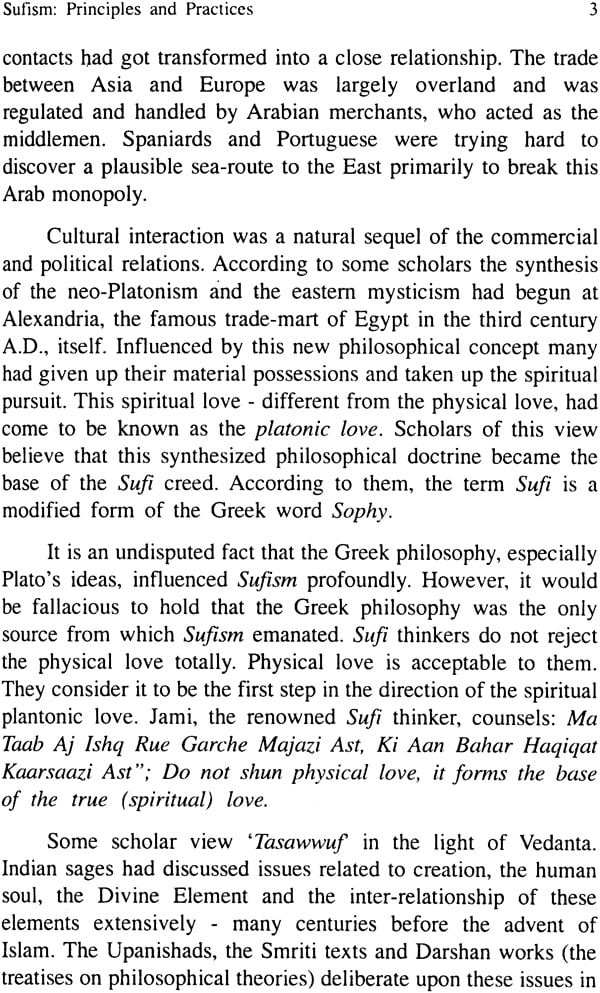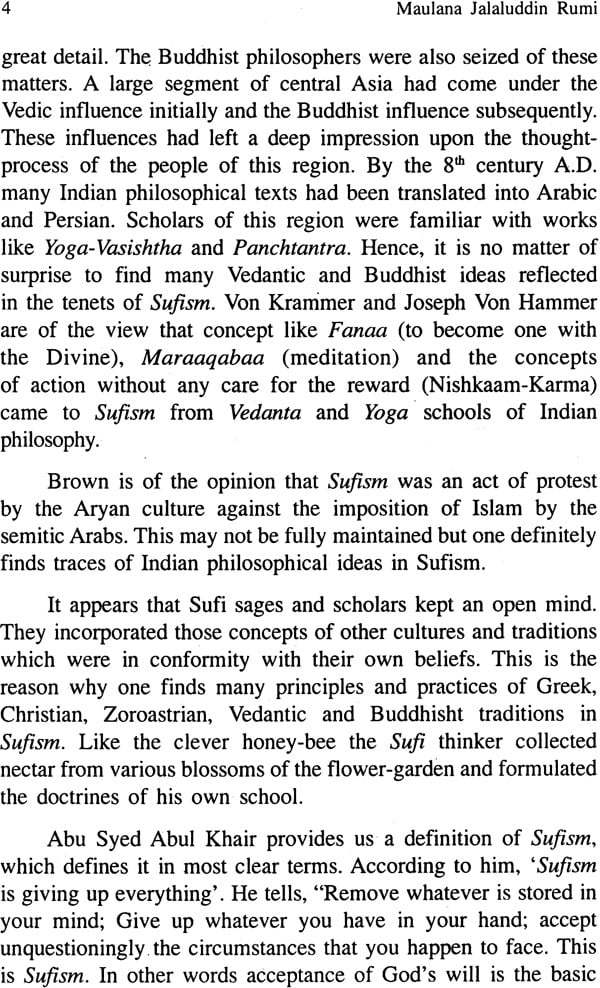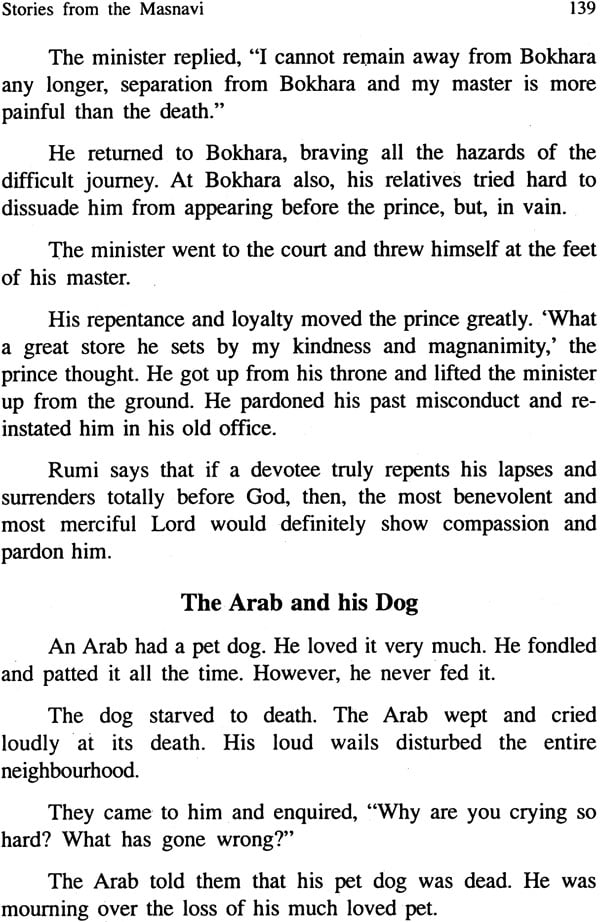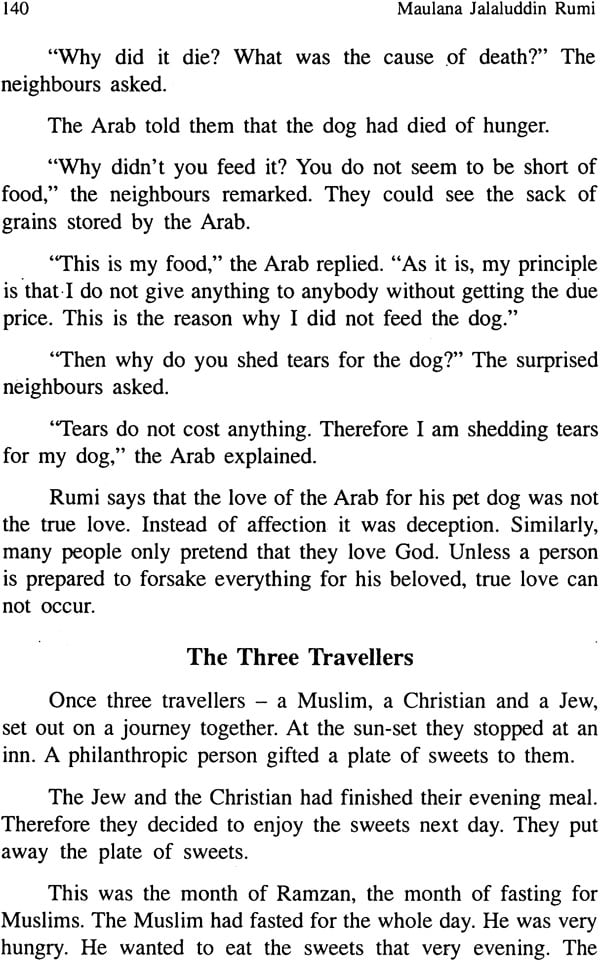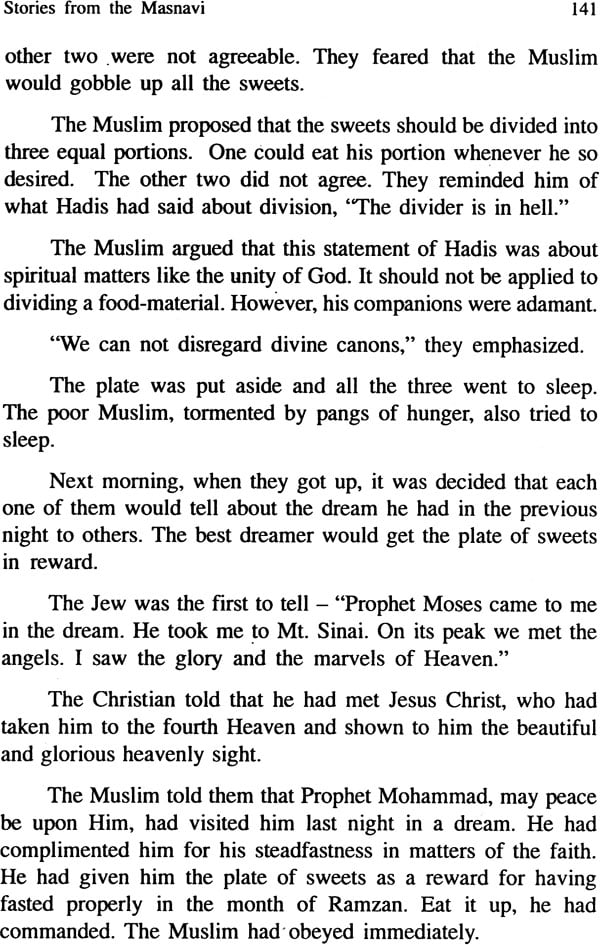
Maulana Jalaluddin Rumi
Book Specification
| Item Code: | NAD533 |
| Author: | Dr.Trinath Mishra |
| Publisher: | Publications Division, Government of India |
| Edition: | 2010 |
| ISBN: | 9788123016429 |
| Pages: | 189 (7 Color Illustrations) |
| Cover: | Paperback |
| Other Details | 8.5 inch X 5.5 inch |
| Weight | 240 gm |
Book Description
Unification with Divinity through selfless love and devotion is the basic doctrine of Sufism. Though Sufism originated in Central Asia, yet its concepts and practices are very close to Indian philosophical traditions of Vedanta and Bhakti. Sufism is much adored and venerated in India.
Maulana Jalaluddin Rumi is one of the brightest stars on the firmament of Sufi mysticism and Persian poetry. This book provides a vMd and interesting account of his life, times, mystic experiences and literary works. It also briefly discusses Sufi doctrines and practices.
Dr. Trinath Mishra, the author, an ex-IPS officer, is a scholar of Hindi, Sanskrit and Persian.
From the earliest days of civilization, thoughtful persons ye been pondering over the mysteries of the creation, actor, the origin of creation and its meaning and mission.
Founders of various religions and faiths give various plantations to people. Some claimed that these answers were voided to them by the Creator himself, either directly or through His messenger. Hence, they proclaimed that these divine explanations were absolute and infallible. No questions about their validity could be raised.
Large sections of the people became followers of these its. However, some persons—in every community and in every period, tried to solve these riddles on their own. Their line of thinking and enquiry, sometimes, conformed to the established beliefs and sometimes deviated from them.
Many of these dissenters and independent thinkers had to suffer at the hands of the orthodox religious leaders and bigoted rulers. Free thinking is a natural trait of intellectuals. Persecution has never succeeded in putting a stop to it. In this case also, failed to curb free and personal enquiry into these issues.
In India, free thinking was never disallowed. One finds Indians sages disputing all religious and social tenets from the earliest days. Doubts and dissent were part of every intellectual activity. In Nasadiya-Sukta of Rigveda one finds a good example of this liberal attitude of Indian sages. This flow of free thinking flourished amply in the Upanishads and the Sutra Texts.
The Upanishads put aside the social and legal aspects of religion and embarked upon an open and unrestrained enquiry about the relationship between man .and the Supreme Divine Element. This free thinking process culminated in the philosophy of Vedanta. According to it the entire creation is permeated by the One Element. All—the constituents as well as the universe, are visible manifestations of the invisible unitary element. Realization of this truth was held to be the mission of human life. One could reach this goal through logical deduction, meditation or devotion.
Later, the profounder of the Bhakti Marg (path of devotion) declared that love is the best and easiest way to achieve this objective. Love of both varieties—physical as well as spiritual, were accepted as valid ways to reach the goal. They also believed in expressing their intense feelings of love unreservedly. This school of thought enriched literature, music, dance and other streams of fine arts greatly. One finds the traditions of free thinking in other cultures also. In Greece it led to the emergence of the neo-Platonic school of philosophy. In Central Asia—Turkey, Arabia, Iran and Afghanistan, it took the form of Tarawa or Sufism.
A close interaction has existed between India and this region from the ancient days. Buddhism had flourished in the region till 8th century A.D. Places like Balkh and Kandahar were bastions of Buddhism. Along with trade and commerce, exchange of ideas and philosophical concepts also took place.
The establishment of the Muslim rule—Afghan and Mughal in India, accelerated this process. Saints, preachers and poets spread their message across India. This set included the Sufis also. The liberal and inclusive Indian culture welcomed these free thinkers. Their ideas impressed the Indian mind considerably. One can find their imprint upon the works of the medieval Bhakti poets.
In the world of Tasawwuf Maulana Jalaluddin Rumi holds the highest position. Rumi’s thoughts influenced the later Sufi and Bhakti thinkers and poets greatly. Rumi rejected the xthodox and traditional way of propitiating God, which involved Inherence to many rigid rules and rituals and advocated .cultivating intense love and devotion for God in its place. He made music and dance — which had been deprecated by the traditional Islam, the means to achieve unity with the Supreme. On this score, ideas of Rumi and Mahaprabhu Chaitanya Dev are, surprisingly, almost identical.
In the works of Rumi the cultural interaction between India and the Middle-East is clearly reflected. Rumi’s Masnavi’s style resembles the style of Mahabharata, Katha-Sarit-Sagara and Panchtantra. Later, Malik Muhammand Jayasi and Goswami Tulsidas adopted this style to compose their monumental works.
The positions that are held by Tulsidas and Surdas in the Hindi literary world are held by Rumi and Hafiz in the domain of Persian poetry. These poet-laureates shine like sun and moon in the firmament of Persian poetry. Rumi is known for his philosophical thought, moral teachings and the intensity of feelings. Hafiz is renowned for his beautiful expressions and the incomparable finesse of language.
Rumi has been a favourite poet of Indian readers. His sayings are often quoted by his admirers in writings as well as in conversation. This book attempts to present the various aspects of Rumi’s life and works to Indian readers.
My book ‘Maulana Jalaluddin Rumi’, in Hindi, was published by the Publications Division of the Ministry of Information and Broadcasting in the year 2007.
Rumi is well-known to Indian readers. However, a comprehensive book, covering all aspects of this revolutionary thinker and poet’s life and works, was not readily available in Hindi. This book filled up a void.
This book was well-received by readers. The Publisher came up with the suggestion that it should be translated into English for non-Hindi-speaking Indian readers.
In English, there are a number of books on Rumi. However, evaluation of Rumi’s thought from Indian view-point was not available. This book is primarily for Indian readers. For this reason, idioms and phrases familiar to Indians have been freely used. Similarity between the Indian cultural traditions and Rumi’s thoughts has been touched upon now and then for the same reason.
Transcription of Persian verses has been done keeping in mind the way Indians pronounce these words. Persian words are pronounced differently by the present-day Iranians, which would be difficult for an Indian ear to comprehend.
| 1 | Sufism: Principles and Practices | 1 |
| 2. | Rumi’s Era: Historical Developments | 23 |
| 3. | Rumi: A Brief Life-Sketch | 23 |
| 4. | Diwan-i-Shams: The Steam of Love | 23 |
| 5 . | Msnavi-o-Manavi: Rumi’s World View | 23 |
| 6 . | Stories from the Masnavi | 23 |
| 7. | Rumi and India | 23 |
